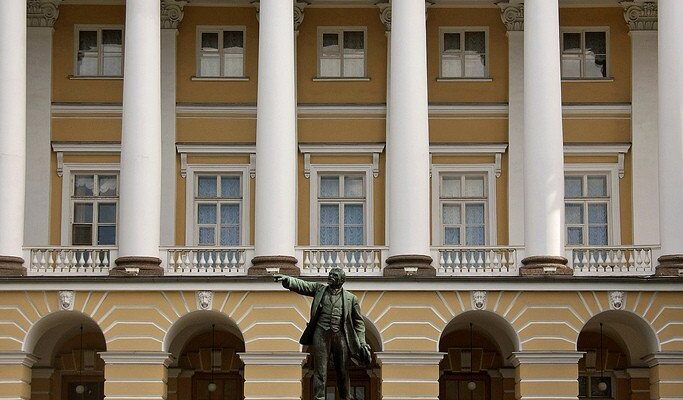Смольный
By the beginning of the XIX century the small premises of the Smolny Convent were no longer sufficient for the needs of the Institute, and the cells intended for nuns were not the best place for high-born maidens. Therefore, in 1808 a new building of the Smolny Institute was built nearby according to Quarenghi’s design, which was characterized by classical rationality and strict simplicity. The educational institution was located there for more than a hundred years, until the summer of 1917. Then the All-Russian Central Executive Committee of Soviets and the Petrograd Soviet of Workers’ and Soldiers’ Deputies settled here. When the Bolsheviks proclaimed a course of armed rebellion, the former Smolny Institute became their headquarters.
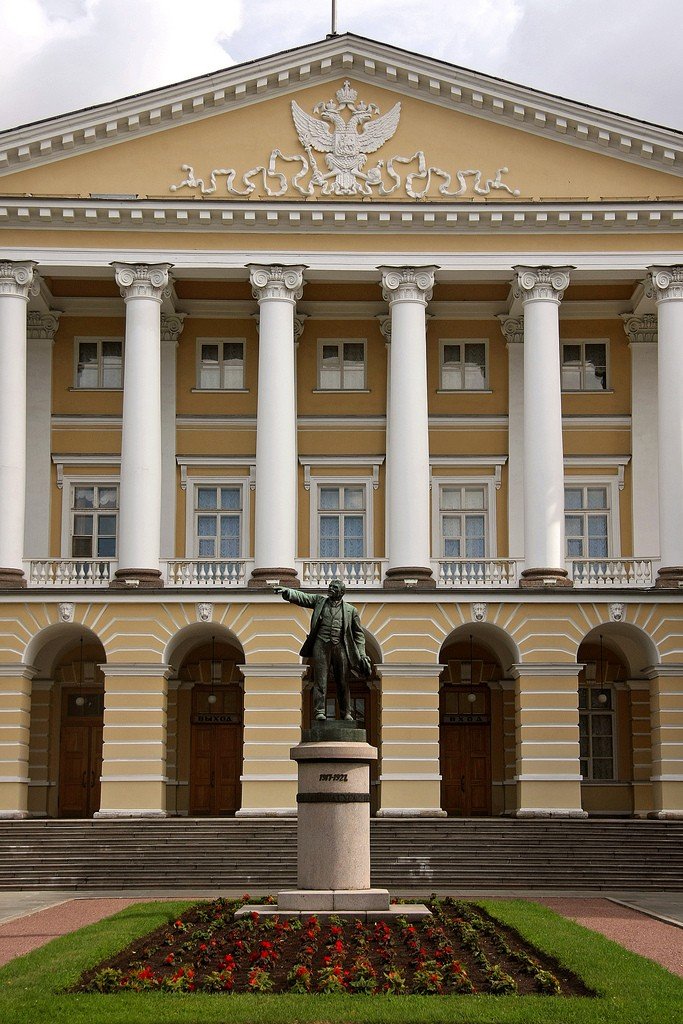
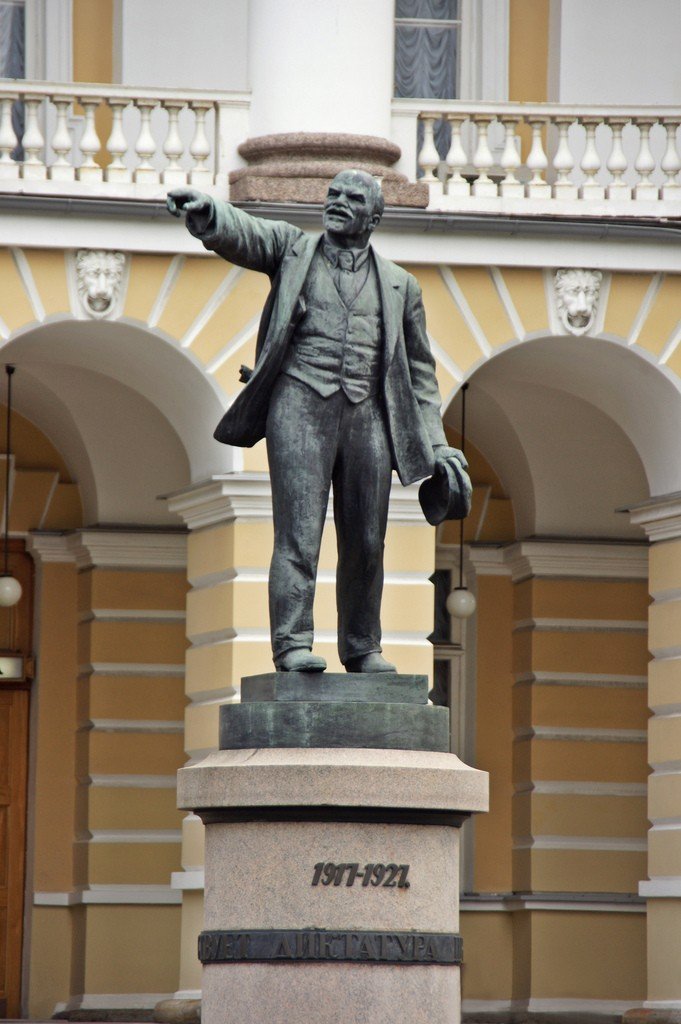
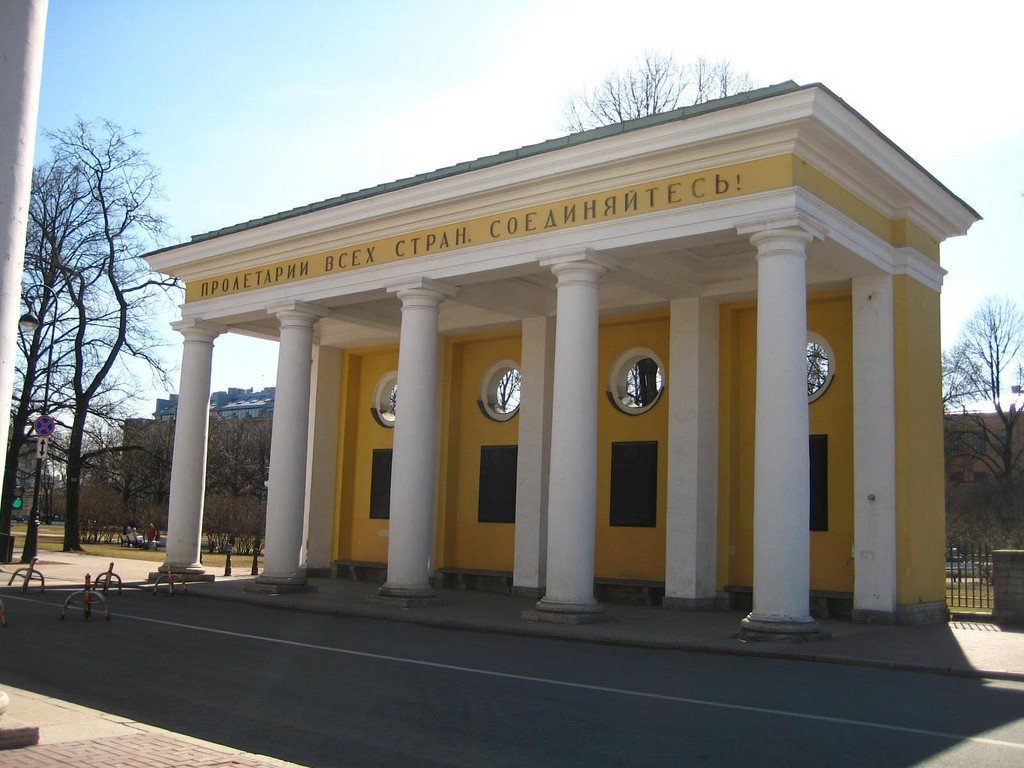
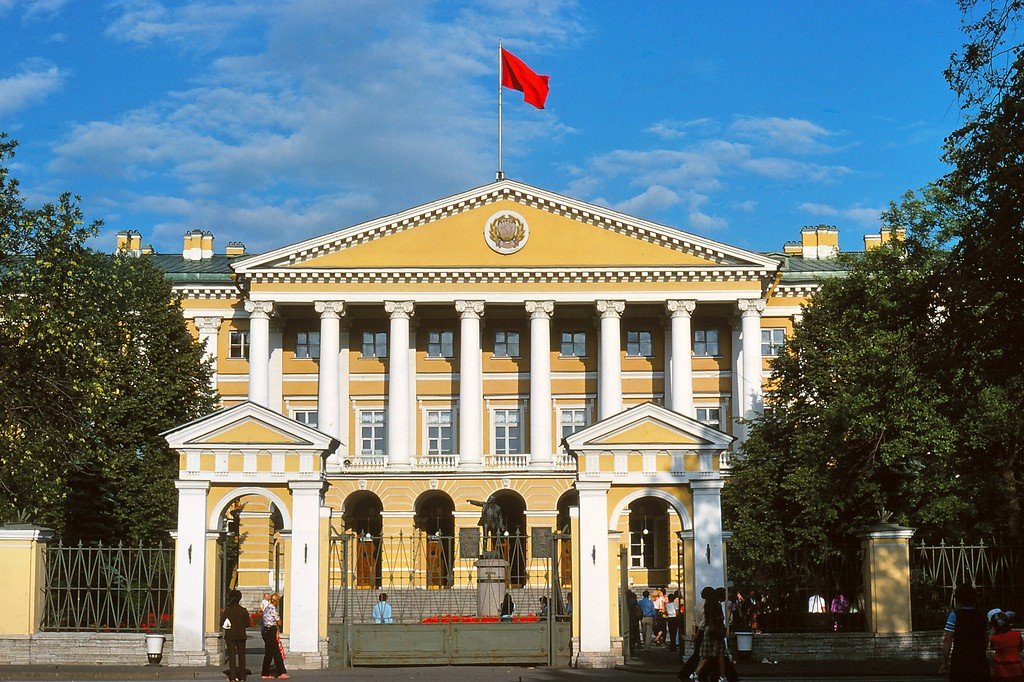
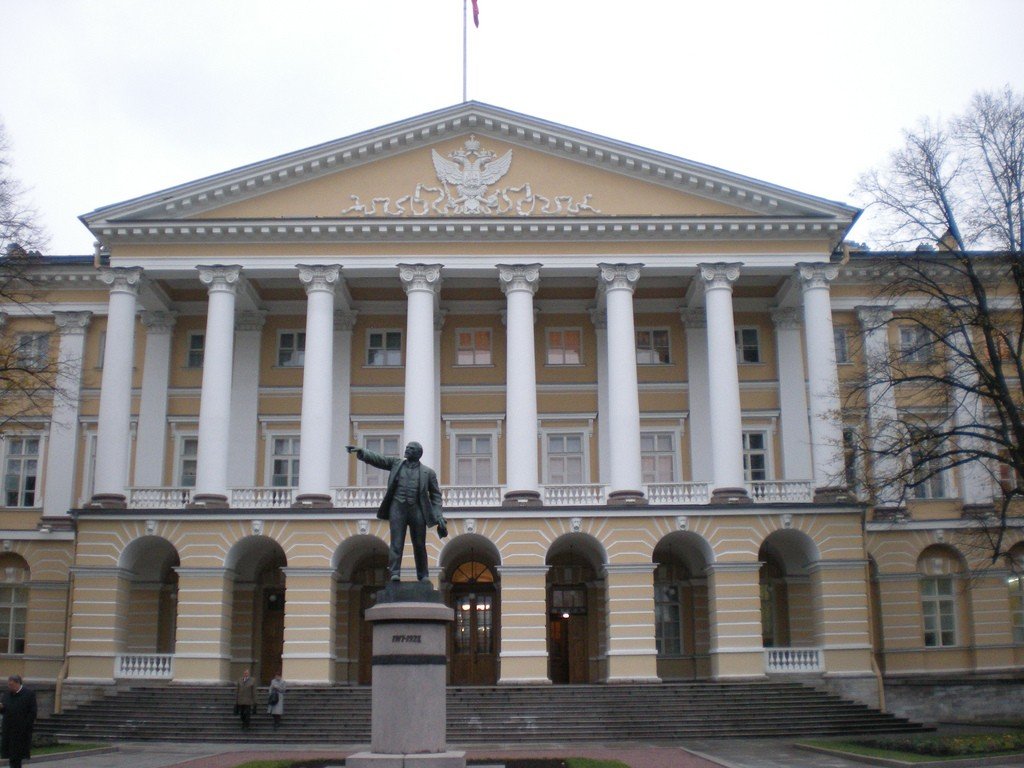
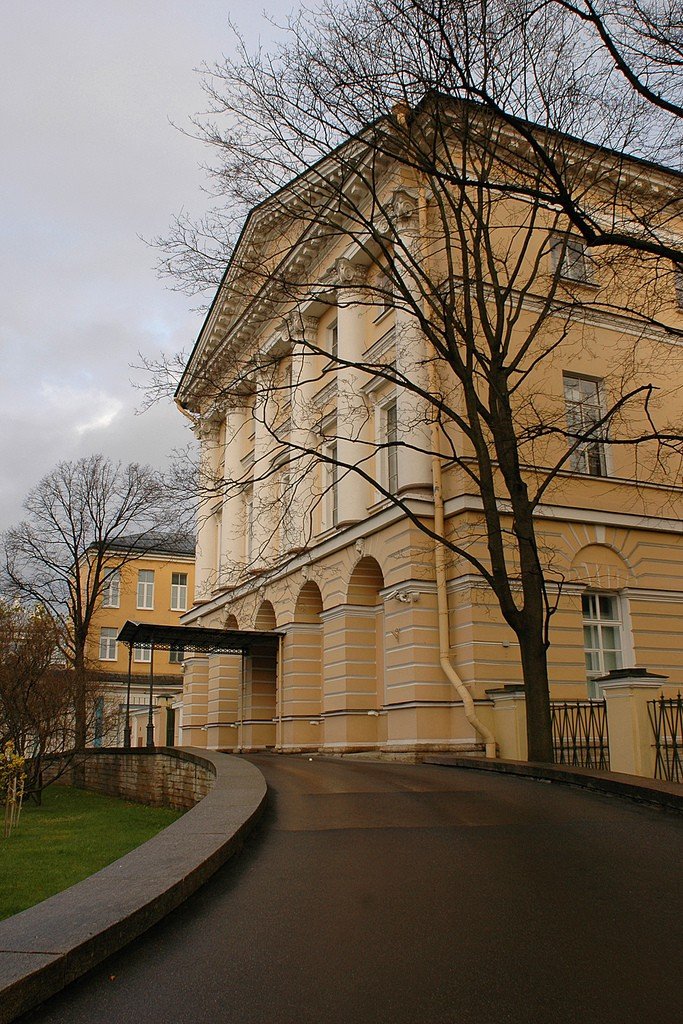
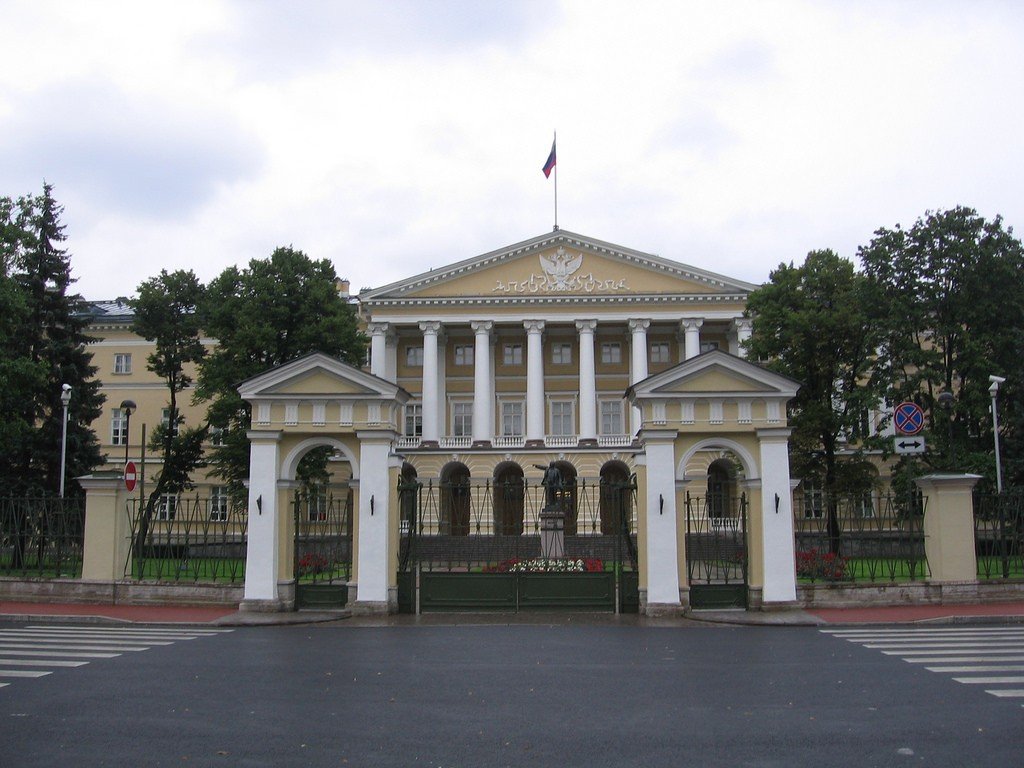
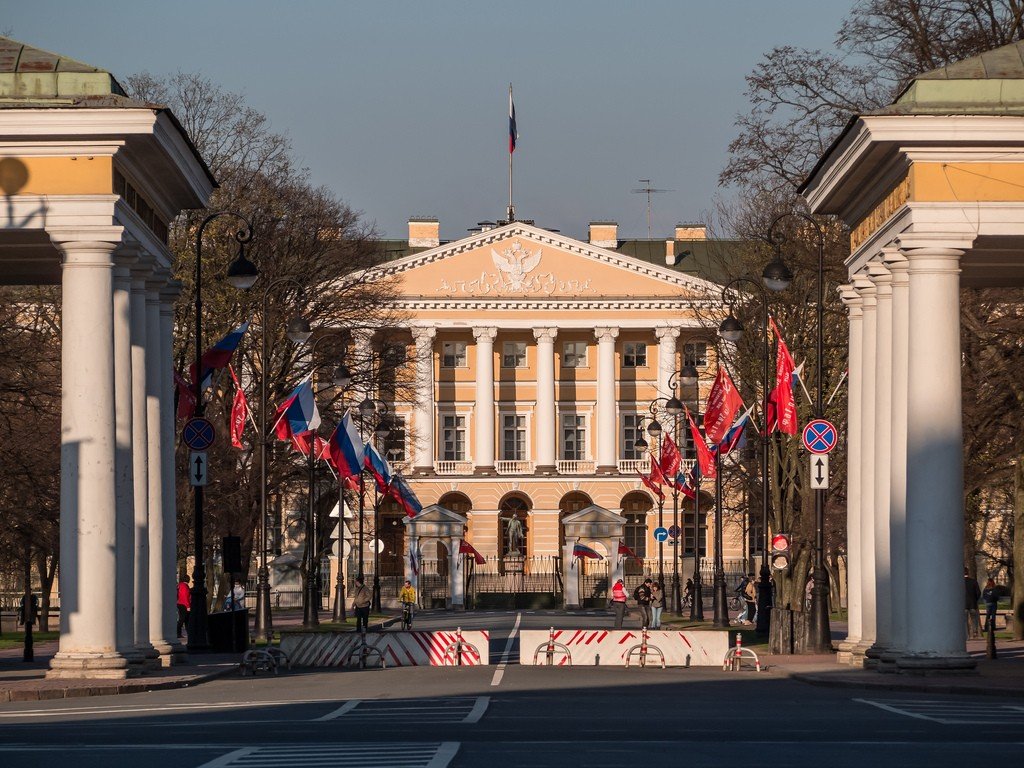
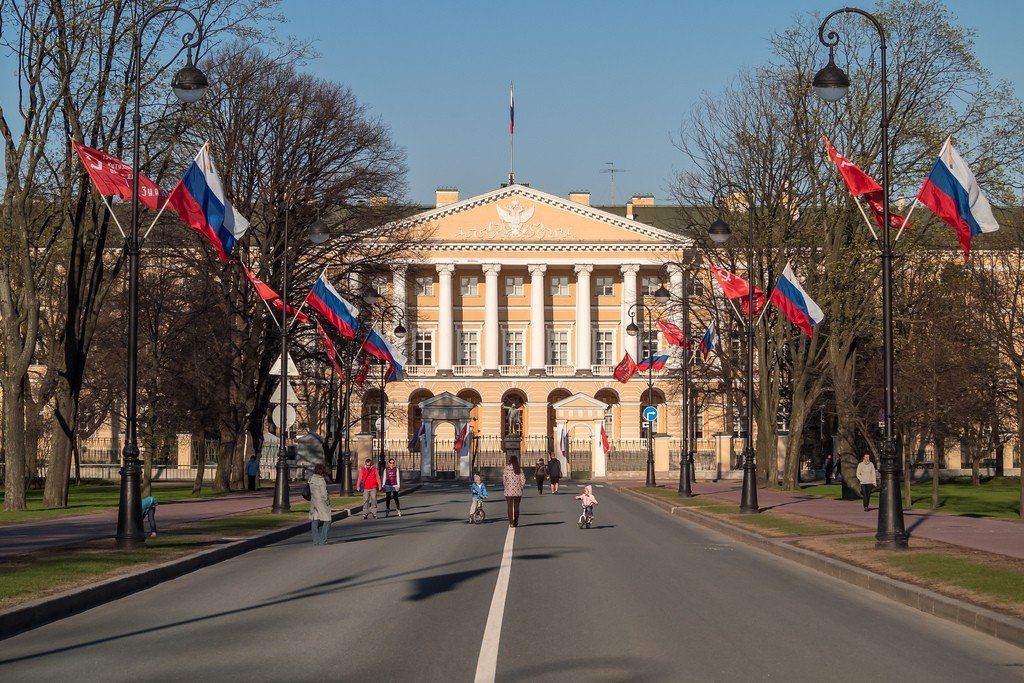
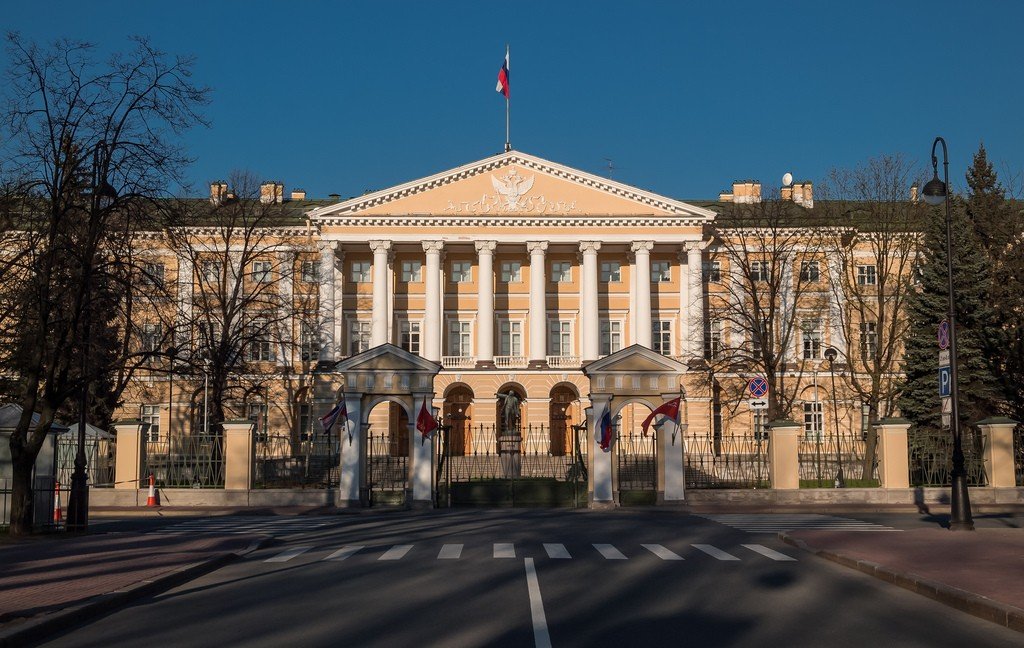
General information
From Smolny on October 25 (November 7) the armed uprising was led, and that same night at the Second All-Russian Congress of Soviets, held in the White-Column Hall of Smolny, the first decrees of Soviet power on peace and land were adopted. Until March 1918, when the capital was transferred to Moscow, Smolny housed the first Soviet government, the Council of People’s Commissars headed by Lenin. During this time Lenin not only worked but also lived in Smolny. In 1927, a museum was opened in the room where he and Nadezhda Konstantinovna spent four months. The furnishings of this room are the preserved almost unchanged interior of the room of the inspectoress of the Smolny Institute. “Finally we settled with Ilyich in Smolny, – Krupskaya wrote later. – We were assigned a room where some class lady used to live. A room with a partition, behind which stood a bed. We had to go through the washroom. In the elevator you could go upstairs, where there was Ilyich’s office, where he worked.” Work was, apparently, tiring, because, according to the story of my wife, coming late at night behind the partition of the room where we lived with him in Smolny, Ilyich could not fall asleep, got up again and went to call someone, to give some urgent orders, and having fallen asleep at last, in his sleep continued to talk about business”. Half a century later, the museum exposition also included Lenin’s study. In the Smolny Museum you can see authentic belongings of Lenin and Krupskaya, materials about the first months of the Council of People’s Commissars and feel the true atmosphere of the time. The museum complex also includes a historical assembly hall, where the victory of the October Revolution was proclaimed, and expositions “Smolny Institute of Noble Maidens” and “Smolny. Blockade Days.” After the government moved to Moscow, the Smolny building housed the regional committee of the Communist Party. From here, the city was led first by a former associate of Lenin, a Bolshevik with a benevolent manner Zinoviev (declared a counter-revolutionary and shot as a result), then Stalin’s favorite Kirov, whose popularity gradually began to threaten the position of the leader himself, so that the case ended with the fact that under circumstances that have not yet been clarified Kirov was shot in the corridor of Smolny. He was succeeded by Zhdanov, who carried out mass repression in the 1930s and 1940s, organized the defense of besieged Leningrad, and after the war published scathing articles about Akhmatova (“Akhmatova’s poetry is completely far from the people”) and Zoshchenko (“Zoshchenko’s viciously hooligan depiction of our reality is accompanied by anti-Soviet outbursts”). Then quite a few different party functionaries ran the city from Smolny, until after perestroika they were replaced by mayors and governors. The first and only mayor of the city was Anatoly Sobchak. Vladimir Yakovlev, who replaced him, was already called governor. Then Valentina Matvienko headed the city for two terms and was replaced by Georgy Poltavchenko in 2011. The city administration is still housed in the Smolnyi.
Visitors
- Pl. Proletarskaya Dictatorship, 3. Metro “Chernyshevskaya”
- Tel. 276-14-61, 276-13-21 .
- The museum is open every day, except Saturday and Sunday, from 10.00 to 18.00 .
- Visit only with a guided tour by prior arrangement. Duration of the excursion – 1h. 15 min.
